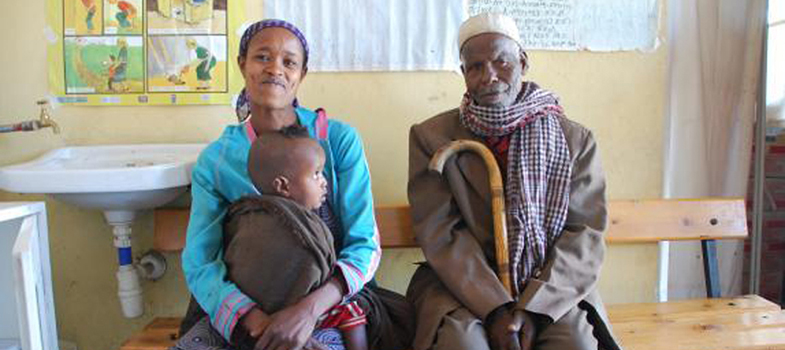3.2 Oral polio vaccine (OPV)
3.2.1 What is OPV?
You will learn more about the oral administration of vaccines in Study Session 4.
Oral polio vaccine (OPV) is made from live-attenuated polioviruses (note that ‘poliovirus’ is all one word). OPV is a light red or light yellow liquid supplied in vials that either have droppers as caps, or they come with separate glass droppers. The vaccine is given by putting two drops into the child’s mouth (Figure 3.1).

Poliomyelitis is described in Study Session 4 of the Communicable Diseases Module, Part 1. It has been eliminated by vaccination in many countries and the WHO aims to eradicate it from the world.
OPV gives protection against the three types of polioviruses (types 1, 2 and 3) that cause poliomyelitis (polio) — a crippling disease of the brain and spinal cord.
What is the crippling effect of polio called? And what does this mean?
It is called acute flaccid paralysis (AFP), which is the sudden onset of severe weakening or loss of muscle tone in the legs, arms or hands.
Note that the vaccine used for routine immunizations in the EPI is not the only type of OPV available. Other types may be issued to control outbreaks of polio if they occur, but are not used for routine protection of infants; these vaccines should be returned to the central store after the supplementary immunization campaign.
3.1 Hepatitis B vaccine (HepB)
